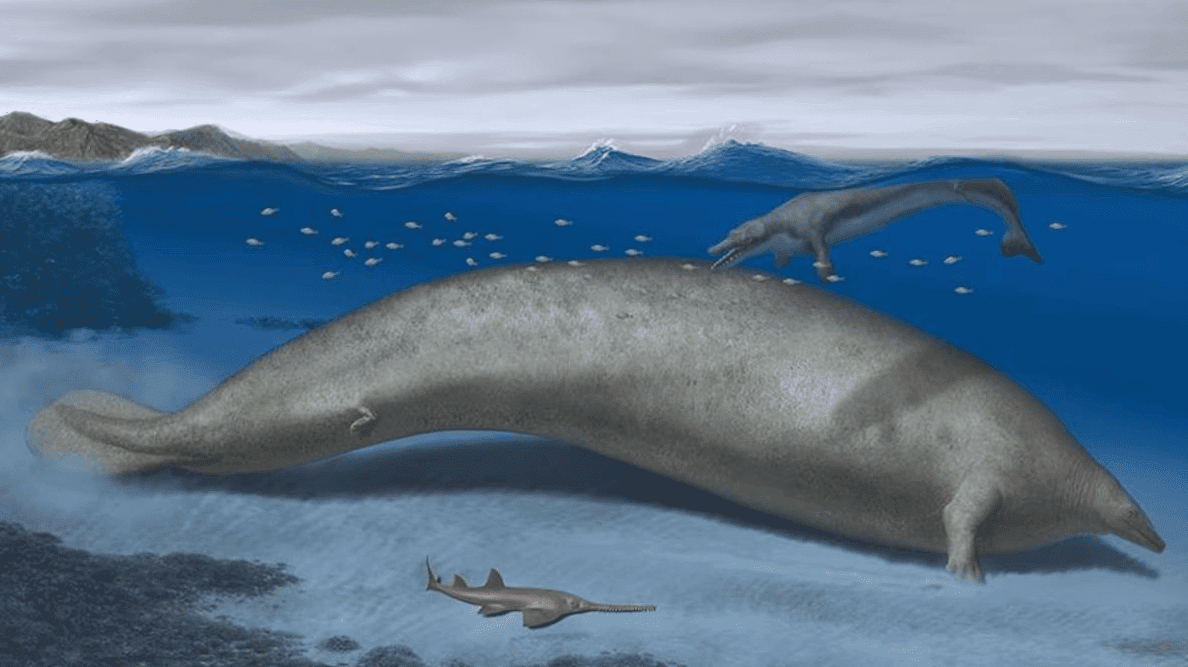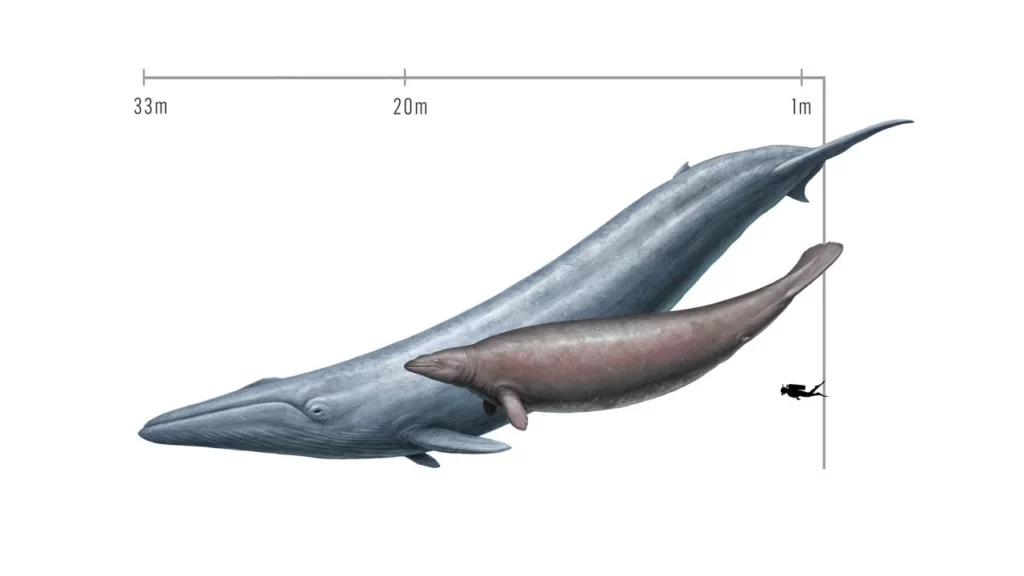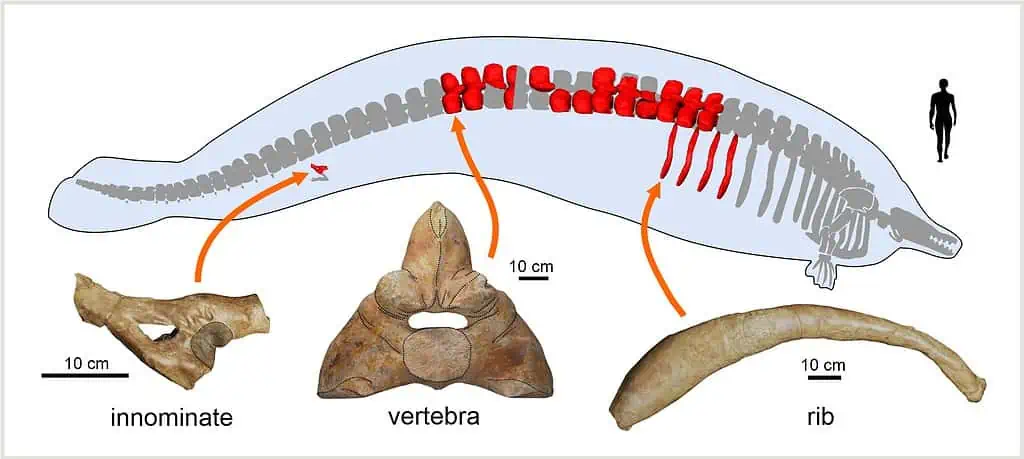
In 2023, a controversial discovery left paleontologists stunned. At the time, researchers made the bold claim that a 39-million-year-old ancient marine mammal, known as Perucetus colossus, might have weighed between 180 and 340 metric tons. For reference, the largest blue whale ever discovered tips the scale at around 175 tons. This would have made Perucetus colossus the heaviest animal known to science. Moreover, since the ancient colossus was a good ten meters shorter than the blue whale, it would have certainly been the densest animal by a long shot.
“So far, extreme gigantism in cetaceans, as seen in the baleen whales, has been regarded as a relatively recent event (around 5-10 million years ago) and associated with offshore habits. Thanks to Perucetus, we now know that gigantic body masses had been reached 30 million years before previously assumed, and in a coastal environment. The discovery of the new fossil hence shows us that the coastal environment can sustain such a gigantic animal, something we did not expect at all. More generally, this demonstrates that extreme gigantism can be acquired through a completely different evolutionary path as was known before,” Eli Amson from the Natural History Museum in Stuttgart and lead author of this 2023 study told ZME Science in a previous interview.
But not everyone was convinced. When researchers at the University of California, Davis and the Smithsonian Institution first saw these specs, they couldn’t help but notice that they looked much too overblown. So, the researchers took a closer look. Their formal analysis, detailed in a new study that appeared recently, confirmed their suspicions.
They found that the initial estimates for P. colossus make no sense as this sort of animal couldn’t possibly exist in a marine habitat. Instead, their own estimates place Perucetus in a weight range comparable to modern whales, notably smaller than the largest blue whales on record.
Not so colossal after all
Perucetus was found in Peru and heralded as a member of the extinct basilosaurid group of early whales, living approximately 39 million years ago. It took paleontologists over ten years to unearth its giant fossils, including 13 vertebrae, four ribs, and a hip bone. One of the vertebrae weighed a staggering 100 kilograms (220 pounds). The ribs measured 1.4 meters (4.6 feet) across.


This was a giant beast, no doubt, but its initial weight estimate raised many eyebrows. Unlike the typical mammal bone structure, which is solid at the exterior with a spongy or hollow center, Perucetus‘s bones were found to be unusually dense, filled in with solid bone throughout. What’s more, Perucetus bones had extra growth on the outside owed to a condition known as pachyostosis that made the bones even denser. This is not necessarily unheard of. Some modern aquatic mammals like manatees also have dense bones, which help counteract buoyancy from all the fat and blubber. This allows these animals to maintain neutral buoyancy or walk on riverbeds, as is the case with hippos.


However, when the researchers of the 2023 study extrapolated the skeleton’s weight to the overall body weight, they ended up with an impossible animal.
“It would have been a job for the whale to stay at the surface, or even to leave the sea bottom — it would have required continuous swimming against the gravity to do anything in the water,” said Professor Ryosuke Motani, a paleobiologist at the UC Davis Department of Earth and Planetary Sciences and lead author of the new study.
A newer, lower estimate
Motani and Nick Pyenson at the Smithsonian Institute National Museum of Natural History reexamined the data on Perecetus with fresh eyes. They found that many assumptions made in the original paper were flawed. The main issue was using just a few bones to estimate the weight of the skeleton. They then used that weight to extrapolate the weight of the entire animal with the assumption that the skeletal and non-skeletal mass would scale with the same ratio. But that’s not reliable, as evidenced by measurements in other modern animals.
Another flawed assumption led to an overestimation of how much the ancient marine mammal’s body mass increased as a result of pachyostosis. Manatees are extremely light, for instance, compared to their dense bones. If a paleontologist were to examine manatee fossils millions of years from now, they too would have grossly overestimated its body size using this method.
Instead, the new estimate places the 17-meter-long Perucetus in the much more modest 60- to 70-ton bracket — much lower than a blue whale. That’s more in line with modern sperm whales. A Perucetus that grew to 20 meters could weigh over 110 tons, but would be still well short of the largest blue whales at 270 tons.
“The new weight allows the whale to come to the surface and stay there while breathing and recovering from a dive, like most whales do,” Motani said.
But the authors that broke the news on Perucetus colossus still stand by their initial assessment. Speaking to Live Science, Eli Amson, a paleontologist and curator of fossil mammals at the Stuttgart State Museum of Natural History in Germany and one of the authors of the original study, said:
“We are estimating the body mass of an extinct animal that is known from a very fragmentary skeleton, so of course there’s quite a lot of room for using this or that method.”
“When you look at the blue whale, it’s gigantic, obviously, but it has a very sleek profile,” he said. “If you compare other marine mammals like manatees and dugongs, they have a much chubbier body outline.”
What could help settle this debate is finding more fossils. Scientists have yet to unearth a skull or even teeth, so it’s difficult to determine what it ate, although the 2023 study suggests it may have fed on shellfish, coastal fish, or scavenged carcasses.
The new findings were reported in the journal PeerJ.
Thanks for your feedback!
Continue Reading
